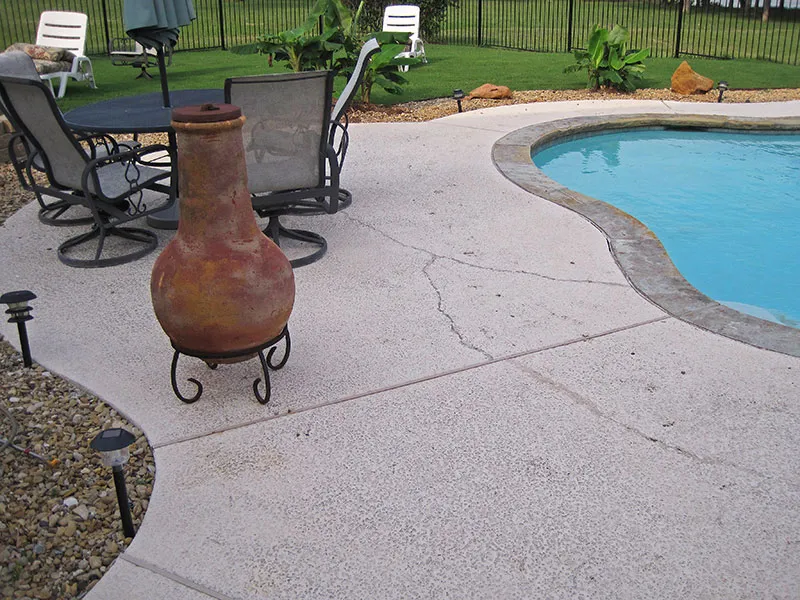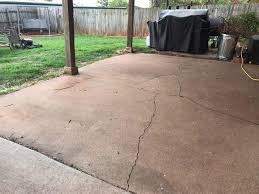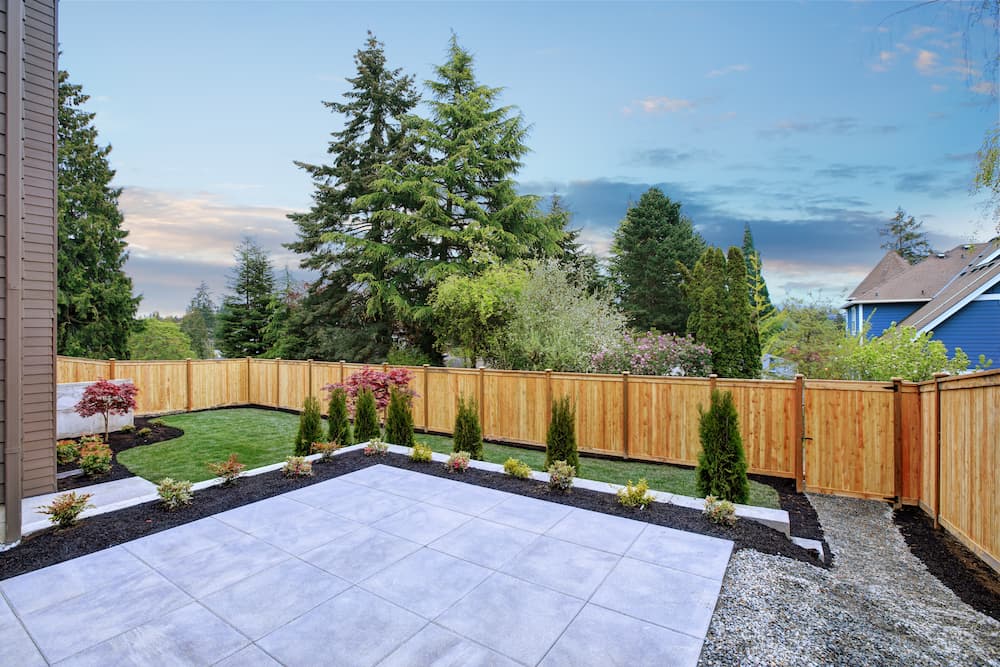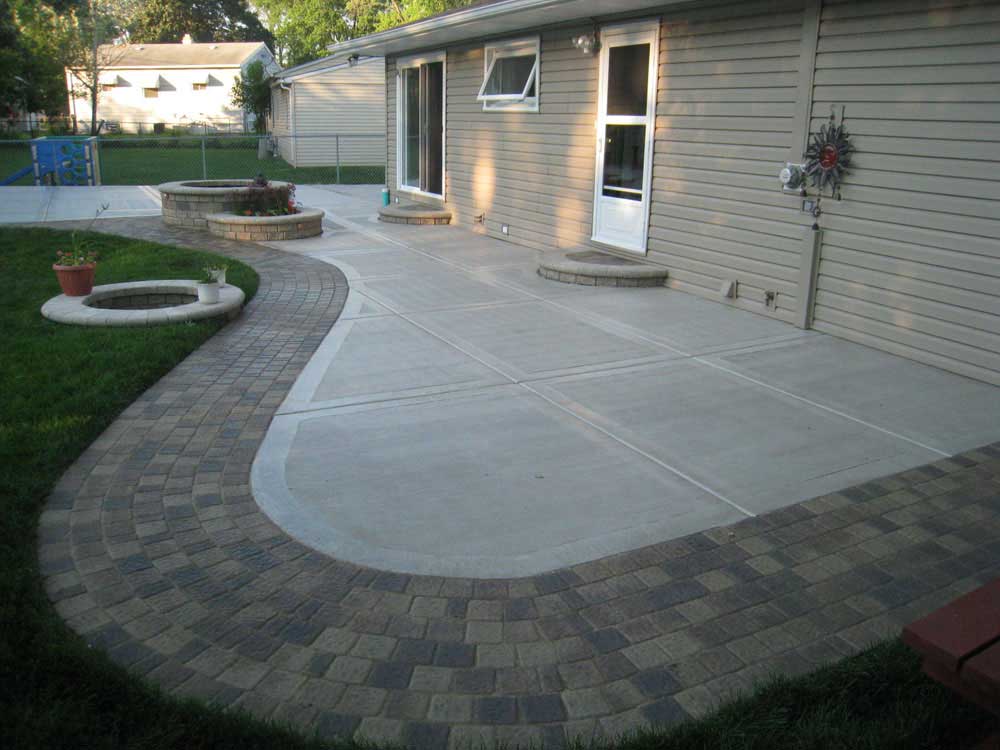Concrete Patio Repair in Los Angeles

by Alonso Romero
CA State Lic. Concrete & Masonry C-8
CA State Lic. General Contruction - B
Buckaroo Banzai the Concrete Nerd
Actual person performing the job
Date: 12/21/2023
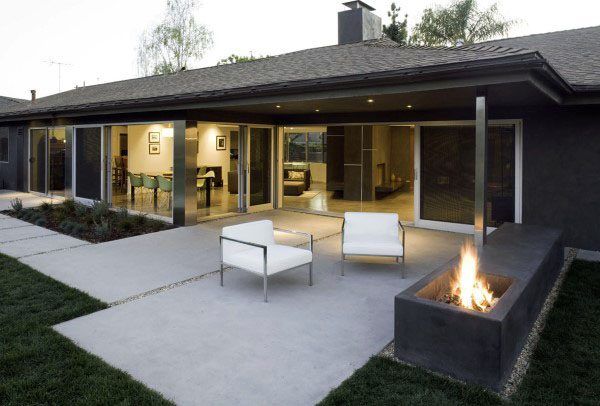
Living in sunny Southern California, who doesn’t entertain outdoors? But who wants to host guests when your patio is old and deteriorating? It’s an eyesore and an accident waiting to happen.
Concrete is one of the most durable building materials out there. Just ask the Ancient Romans. Their concrete is still around and we are just now understanding the secrets behind their enviable concrete masterpieces.
Our modern concrete is just as hard working, but over time it suffers the same ravages of age as all things – from small, superficial cosmetic cracks, to more deeply problematic upheavals.
There are many options out there for you to improve the look and structure of your cracked concrete patio.
Why is my concrete patio cracking in Los Angeles?
There are many reasons why your concrete patio is looking its age. While most people in Southern California would probably guess the earthquakes – that’s actually not the case.
Tree Roots Damage Concrete Patios in Los Angeles
The most pernicious culprit in the cracking of concrete in Los Angeles is none other than our foliage. That’s right. Those shade trees in your backyard and wreaking havoc on your concrete. The roots, in their endless search for water, pop up the concrete, leaving cracks in its wake.
Water Damage in Concrete Patios in Los Angeles
Roots are the only nemesis to concrete – so is water. Anytime water ends up underneath concrete, it’s going to undermine the soil, too, and that, my friends, is going to undermine your concrete. Your concrete is laid on that soil, so if that soil is gone, it’s going to create a pocket of air that will create cracks in your concrete.
Insufficient Reinforcement of Concrete Patios in Los Angeles
Not only that, but most concrete installed 30+ years ago was likely installed without rebar – you know, those metal rods used in construction. With rebar in your concrete, it is less likely to pop up when under pressure from those pesky roots.
It’s also likely, with younger concrete, that it just wasn’t installed correctly. Contractors with a concrete license are your best bet in making sure your concrete is correctly installed. Only they have the specialized knowledge and know-how to make your patio a success. For example, did you know that during heat waves, the soil under your future patio actually has to be soaked with water overnight? Why? So the parched soil doesn’t soak up all the water from the concrete, leaving the concrete brittle and prone to cracks.
Joints in Concrete Patios
Another installation faux pas that can be causing you a nightmare are joints. Not those kinds of joints. Joints are those straight lights that are seemingly cut into the concrete at regular intervals. All concrete contractors know that joints must be put into concrete patios when the concrete is poured. That way, the concrete has room to expand in the heat and contract in colder weather. Just installing joints will cut down on the amount of cracks dramatically.
As you can see, it pays in the long run to hire a licensed concrete contractor.
Repair or Replace Cracked Concrete Patio in Los Angeles
Not all cracks are cause for panic, when it comes to our concrete patios. Small cracks, less than ¼ inches wide are not huge causes for concern. There are many products out there for a DIYer to fix up the look of minor cracks.
However, if your patio has deep cracks or cracks larger that ¼ inches wide, it’s time to replace the patio. The rule of thumb is that if your patio is about 30 years old and looking a little on the busted-up side, it’s time to replace.
How do I replace a concrete patio in Los Angeles?
With a licensed concrete contractor, it’s easy and, in most cases, a lot faster to replace your concrete patio than you may think. The whole process will likely take about a week or less.
Your licensed concrete contractor will do the following:
-
Work with you to decide the final design of your project
-
Excavating and disposing of old concrete
-
Framing the preparing the soil for the new concrete
-
Install rebar
-
Pour and smooth out the concrete
-
Give you instructions on how to maintain your concrete.
Believe it or not, the entire construction process may take as little as a week – depending on the size and scope of the project. You’ll have your new patio in no time!
During the design process, you may want to consider stamped concrete. There are all types of different stamps that can be applied to wet concrete the mimic the look of stone or even hardwood! You may also want your concrete to be stained to give it a fresh new color, rather than the typical drab gray.
In addition, pay close attention to the instructions you are given after your concrete is poured, as it will require some babying. If you pour your concrete during stereotypically sunny Southern California day with the temperature hovering at 72 degrees, you probably won’t have to do anything other than sit and watch the concrete dry. However, if you pour during a heatwave, you will have to water your concrete about twice again until it cures.
Concrete Contractor Los Angeles
I know what you’re thinking. You’ve probably watched a lot of YouTube videos and you think that replacing your concrete patio is a quick DIY job. It is a quick job – when you are a licensed professional. Concrete is finicky and once it’s poured, that’s that. There is no fixing mistakes. Do yourself a favor and call a licensed concrete contractor. Give us a call for a free quote and you’ll be walking to your front door with no fear.
